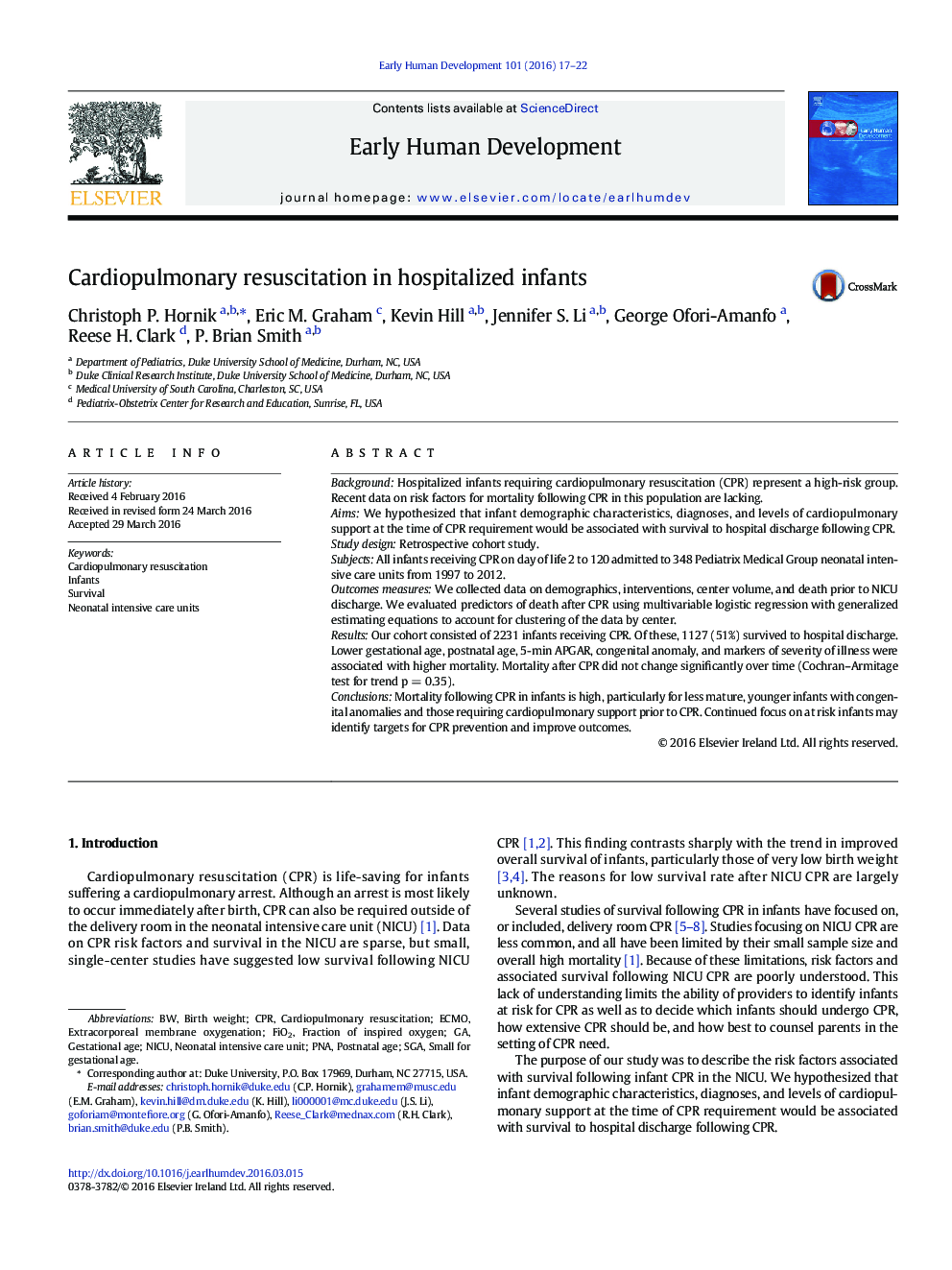| کد مقاله | کد نشریه | سال انتشار | مقاله انگلیسی | نسخه تمام متن |
|---|---|---|---|---|
| 3916661 | 1599465 | 2016 | 6 صفحه PDF | دانلود رایگان |
• Information about survival after in-hospital cardiopulmonary resuscitation (CPR) in infants is lacking, as are descriptions of risk factors and temporal trends.
• We conducted a large retrospective cohort study of 2231 infants requiring in-hospital CPR outside of the delivery room.
• We found overall survival to be low (51%), and identified several risk factors for mortality, including prematurity, younger age, severity of illness, and presence of congenital anomalies.
• We further did not see any improvements in CPR survival over time.
• Our findings highlight the impact of CPR on outcomes in hospitalized infants, and provide guidance for parental counseling and for the design of future clinical trials.
BackgroundHospitalized infants requiring cardiopulmonary resuscitation (CPR) represent a high-risk group. Recent data on risk factors for mortality following CPR in this population are lacking.AimsWe hypothesized that infant demographic characteristics, diagnoses, and levels of cardiopulmonary support at the time of CPR requirement would be associated with survival to hospital discharge following CPR.Study designRetrospective cohort study.SubjectsAll infants receiving CPR on day of life 2 to 120 admitted to 348 Pediatrix Medical Group neonatal intensive care units from 1997 to 2012.Outcomes measuresWe collected data on demographics, interventions, center volume, and death prior to NICU discharge. We evaluated predictors of death after CPR using multivariable logistic regression with generalized estimating equations to account for clustering of the data by center.ResultsOur cohort consisted of 2231 infants receiving CPR. Of these, 1127 (51%) survived to hospital discharge. Lower gestational age, postnatal age, 5-min APGAR, congenital anomaly, and markers of severity of illness were associated with higher mortality. Mortality after CPR did not change significantly over time (Cochran–Armitage test for trend p = 0.35).ConclusionsMortality following CPR in infants is high, particularly for less mature, younger infants with congenital anomalies and those requiring cardiopulmonary support prior to CPR. Continued focus on at risk infants may identify targets for CPR prevention and improve outcomes.
Journal: Early Human Development - Volume 101, October 2016, Pages 17–22
